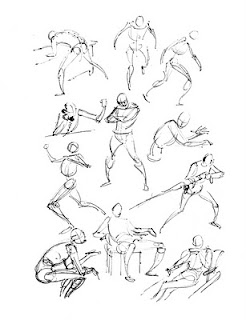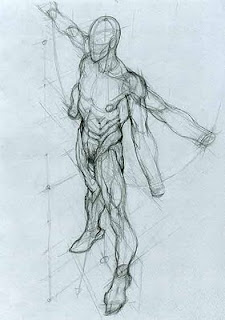Instructors
Far and away the best instructor in the field of constructive figure drawing is Glenn Vilppu. Check out his website for copies of his wonderful videos: www.vilppustore.com. If you can, buy them all.
This web address contains a number of online articles by him: www.awn.com/category/columns/vilppu
Comic book artist David Finch recently released an excellent drawing dvd:
www.thegnomonworkshop.com/news/2010/02/new-dynamic-figure-drawing-series-with-david-finch
Websites
www.posemaniacs.com/blog/pose
http://figure-drawings.blogspot.com
www.alienthink.com
Books available on the web:
Andrew Loomis was an illustrator and suberb draughtsman in the golden age of illustration. He wrote several books on drawing which are very helpful, particularly "Figure Drawing for All it’s Worth" and "Drawing the Head and Hands".
They are available online here:
http://fineart.sk/index.php?cat=1
or here:
www.alexhays.com/loomis/
Other Books:
"How to Draw Comics the Marvel Way" by Stan Lee
"Drawing The Head And Figure" by Jack Hamm
The Process:
1. Beginning Form: Start by drawing this simple form of a sphere and cube covered by some material. Do not move forward until you become very good at drawing these.

2. Transitional Form and the Simple Mannequin: The beginning form acts as the rib cage and pelvis. Now add the columns of the legs and arms to make a simple mannequin.


John Buscema's mannequin:

Glen Vilppu:

One can also use a mannequin based upon the cube form:

3. Complex Mannequin: Now add simple anatomy. The shoulders and pectorals are grouped together. The external obliques, abs and underwear shape of the pelvis are the other forms.


In the image below notice simple proportions to help you with your mannequin:
Pit of neck to bottom of sternum equals sternum to tenth rib equals rib to pelvic points.

These are the basics, now you only need to draw, draw, draw.
UPDATE: The following images show how to combine superior knowledge of anatomy and the constructive method of drawing:
Alex Raymond:

Simone Bianchi:

